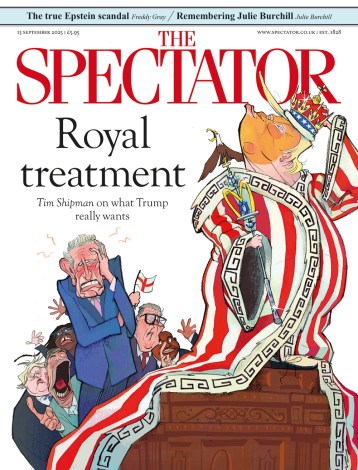English National Ballet has a long history of Nutcrackers, each memorable in its own way. This one, created by ENB’s artistic director Wayne Eagling for the company’s 60th anniversary, is no exception. Contrary to today’s trends, Eagling has opted for a fairly traditional staging, steering away from the lure of modern readings, satirical reinterpretations and impenetrable psychological takes. For the seasoned viewer and newcomer alike, this Nutcracker has the same retro flavour that some illustrated books from 50 to 60 years ago possess, thanks also to Peter Farmer’s luscious sets and costumes.
One of its greatest novelties is that the action takes place in this country and not in some fairy-tale German region, as is customary. Hence the presence of the frozen Thames, on which skaters have a jolly good time while the guests arrive at Clara’s house for the Christmas celebrations. The skating idea is, in my view, one of the most effective ways in which this great music has ever been used.
Things remain more or less in line with the original 1893 scenario, but there are some changes. Drosselmeyer, a rather likeable, dashing fellow and not the usual scary, eye-patched old grump, remains the deus ex machina throughout the magic adventure. Clara grows from young girl to ballerina during her fantastic journey with the Nutcracker, whom she identifies with Drosselmeyer’s handsome nephew through a series of dramatically puzzling on-stage substitutions.
Although there is no Kingdom of the Sweets or Sugar Plum Fairy, there is a puppet theatre out of which come the protagonists of the second act divert — another clever idea that justifies the disjointed dance numbers of the endless divertissement. All in all, this is an enjoyable new production, even though there are still some edges that need to be smoothed – for instance, in the Arab dance, where a young male slave is taunted a tad too unbecomingly by a bare-torsoed sultan-like character.
Indeed, the old-time flavour of Eagling’s Nutcracker contrasted pleasantly with the Cinderella by Matthew Bourne I saw earlier in the week. Bourne has gone back to what I believe was one of his less felicitous creations, and reworked it considerably for New Adventures. The action is still set in London during the 1940 Blitz but is dramaturgically more fluid and coherent than before. Not many would normally associate Charles Perrault’s fairy tale with bombs falling, shelters in which all sorts of sex is on offer, and a stepbrother with uncontrollable foot-fetish urges. Yet everything comes together and concludes happily in a scene that is vaguely reminiscent of Brief Encounter, the last of many scenes in which cinema — one of Bourne’s passions — is cited.
What I really like about this Cinderella is the way it takes full advantage of the truly dark, though often choreographically overlooked, side of Prokofiev’s splendid score. Bourne is also a master in bestowing dramatic credibility upon a vast array of characters; grotesque and unpleasant as they might be, they capture the viewer’s attention and keep the story alive from beginning to end. The choreography, too, is good and even scintillating at times, with the usual amount of in-text references and quotations that Bourne’s admirers have grown accustomed to. It may not be everyone’s idea of a traditional Christmas show — although the few children that were in the audience the night I went seemed to enjoy it — but it is certainly a great alternative to the sickening overabundance of sugary stuff that is on offer at this time of the year.





Comments